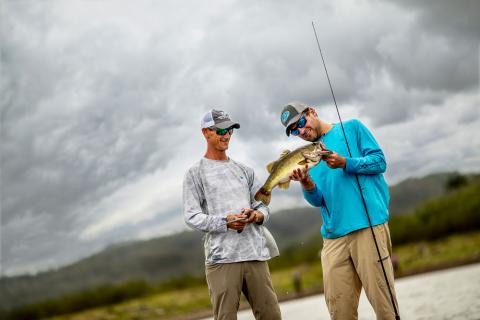provided by John E. Phillips
Slade Johnston of Tuscaloosa, Alabama, is developing new ways and finding additional government programs to try and stop one of the worst enemies of GameKeepers – feral hogs. Scientists have documented that feral hogs will destroy crops, root-up green fields, eat supplemental feed intended for deer and turkeys, rut-up roads, break-up turkey nests, eat the eggs of ground-nesting birds like bobwhite quail and turkeys, kill newborn fawns, eat the natural foods available for deer and turkeys and threaten wetlands’ habitat and destroy ecosystems as they have in Hawaii by altering the quality of available water.
Their reproductive rate is unbelievable with wildlife researchers saying that one sow can have two litters of four to six piglets per year. Much like cockroaches, just as fast as you kill feral pigs, more will show up. If ever there was a GameKeepers’ enemy, it’s the feral hog. Today there are two kinds of GameKeeper lands – lands that have wild pigs and lands that are about to have feral hogs on them. Dr. Steve Ditchkoff, professor of wildlife at Auburn University, reports that, “The most serious issue with feral hogs is in the Southeast, California and Hawaii. But scientists believe the Midwest, which is known as the Bread Basket of America, soon will have a severe feral-hog problem.”
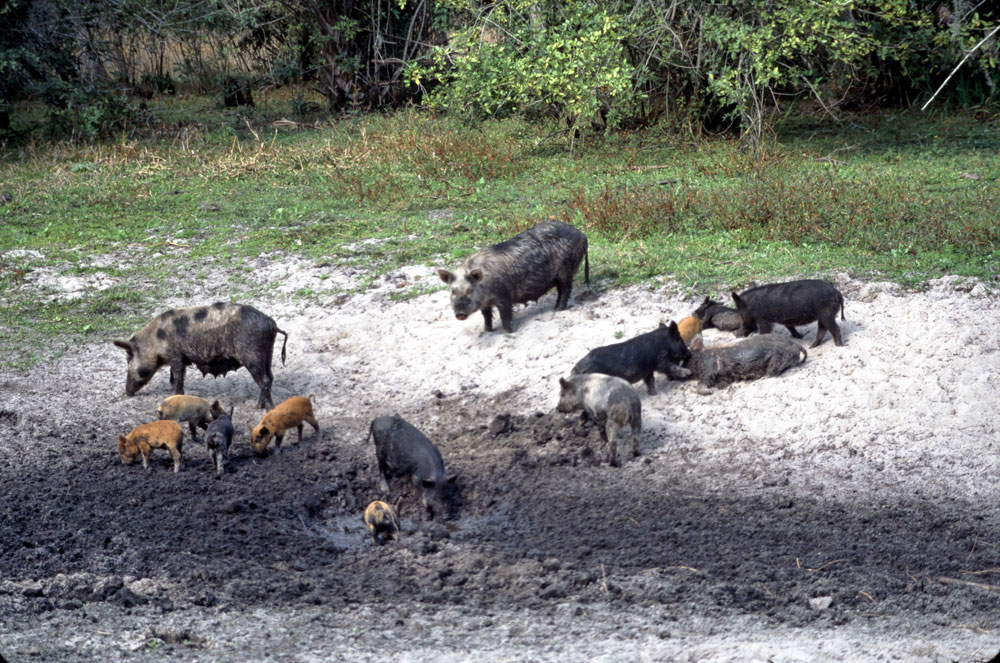
Slade Johnston shares his history with these wild pigs and why it should be part of any GameKeeper’s management plans.
History of the Land - People Who Have Lived, Worked, Hunted and Fished It
Our family farm is on the Sumter/Choctaw counties’ line in the Black Belt section of Alabama with its extremely rich soils, abundant wildlife and deer and turkey populations that have been restocked. My grandmother on my mother’s side grew up on this property. Her father and grandfather had acquired quite a bit of land around our family homestead that’s been passed down from generation to generation. My grandfather, Gary Fortenberry, was an avid outdoorsman who loved my grandmother’s land and bought more property when he could to add to it when he had extra money. He also leased any available lands that adjoined our family farm property. For many years, our family and friends have enjoyed hunting and fishing on these lands. We have family memories on just about every inch of this property.
Our land was farmed years ago for cotton, wildlife and cattle, but today we use it for timber investment and wildlife conservation and management. Everyone in our family is passionate about hunting and fishing. My grandfather was concerned too with rotating timber tracts to provide a diverse habitat and never took hardwoods, since they provided food for deer and turkeys. We’ve continued his same policy.
Why GameKeepers Should Be Concerned about Feral Hogs
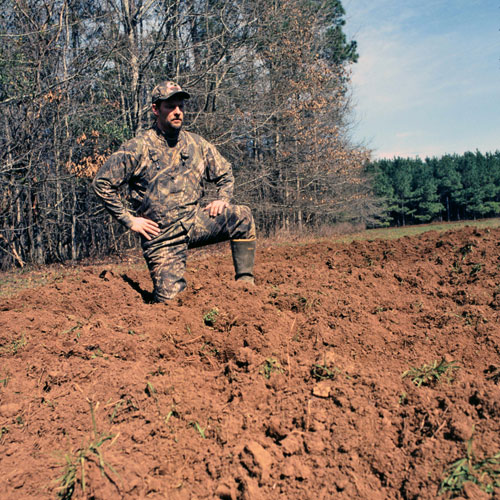
Feral hogs are devastating not only to our land but also to all the properties around us. Because of the hogs’ high rate of reproduction, they’re very hard to manage. Studies have been done on the factors impacting the decreasing numbers of wild turkeys in the Southeast. I have to believe that wild pigs play a major role in reducing the numbers of wild turkeys that are hatched and able to survive each year. Hogs also consume a tremendous amount of crops planted in food plots and wild vegetation that deer, turkeys and other wildlife depend on throughout the year.
If you’re doing any kind of supplemental feeding for deer, feral pigs generally will consume most of that feed, if they can reach it. When acorns start falling each year, the hogs are the first ones to start eating them as they move through the woods. Due to these factors, managing for other wildlife in our section of the South has become much more difficult on lands that have large feral-hog populations.
The feral hogs on our lands are rooting-up and destroying our green fields and our lawns. My grandmother still lives on our property, and our family has another house on the land. We can’t even cut the grass with a lawnmower because the wild pigs have rooted-up the front and back yards. They also cause road damage, particularly along the edges of our roads. You hardly can go anywhere on our land without seeing places where the hogs have been rooting.
When We Thought Wild Hogs Were Cool
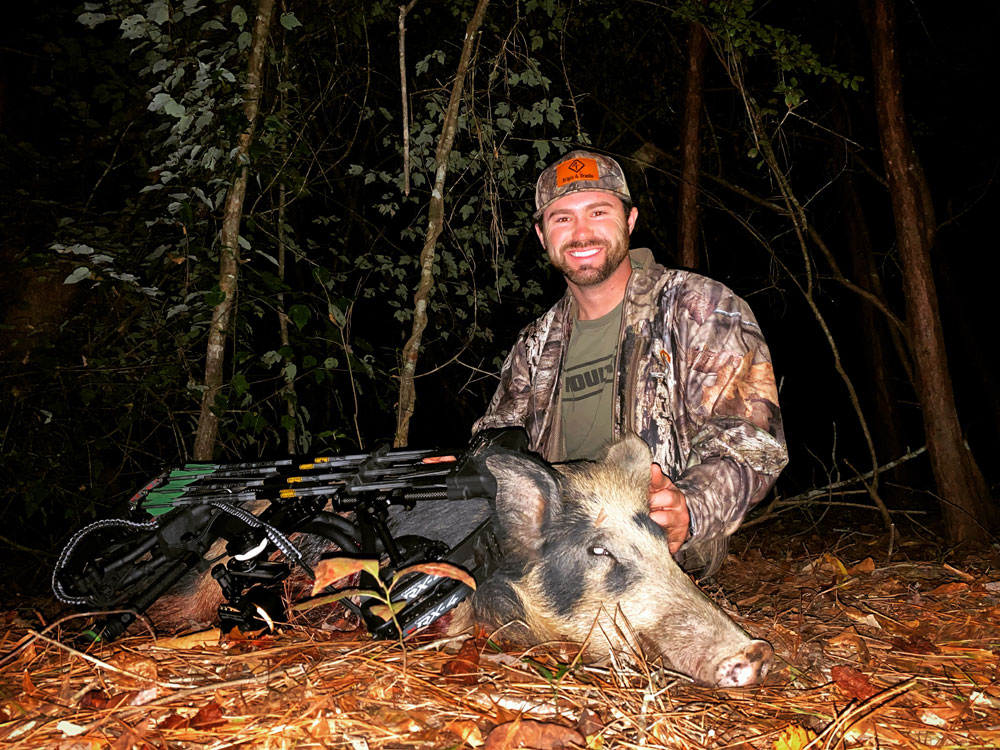
We first started seeing hogs on our land about 15-20 years ago. We would see one here and there but never spotted many hogs at one time. Like many other property owners, we enjoyed trying to take them. But when we began using game cameras to survey the wildlife on our property at day and at night, we realized we had many more hogs than we ever believed. Every year since, we’ve seen more and more hogs on our lands. Right now, if I put out a 50-pound bag of corn to attract wildlife and do a camera survey, the day afterwards, the hogs will eat every kernel of corn. For sure, that will happen by the second day.
These wild pigs have been both a curse and a blessing. Hogs provide a target-rich environment for hunters who live in areas where feral hogs haven’t moved in and multiplied as fast as they have in the Southeast. So, my family has been able to get value for these wild hogs by bringing in hunters from out-of-state who want to pay to hunt and shoot hogs. The advantage our hunters have is we don’t restrict the numbers of hogs a hunter can take during his trip. Some hunters just want to take a big boar hog with long tusks. But other hunters may want to take as many wild pigs as they can on a two or a three day hunt. If we put a hunter in a shooting house over a green field, he’ll have an extremely-good chance of seeing 1-12 hogs before dark.
What is Trips4Trade?
Trips4Trade is a program that people can come to its website, put in a profile of where they live, tell what game species is the most abundant in their areas and trade a trip on their hunting lands for a hunting trip to another part of the country and hunt perhaps a different species of wildlife with other members of Trips4Trade. But we haven’t limited Trips4Trade to exchange only hunting trips. We have members who offer beach condos, river or lake cabins or houses and any type of outdoor experience like fishing trips that our Trips4Trade members have access to that they can allow other members of this site to use.
On the Trips4Trade website profile for our land, we list hog hunting, deer and turkey hunting as well as combo trips for deer and hogs and turkeys and hogs. We have a place where people can stay, and we’ll trade these trips for other hunting opportunities or offshore saltwater fishing trips or vacation trips. Our family usually makes several of these swaps each year, and we’ve met and made some great outdoor friends. One of the first swaps I ever made was with a fellow from Colorado who brought his son to our family farm to hunt hogs. Then my dad and I traveled west to Colorado to hunt Merriam’s turkeys with him. We’ve swapped with him four or five times through the years and also made lifelong friends with this hunter and his family and had the opportunity to take Merriam’s turkeys we might not ever have been able to hunt. In exchange, he and his son have taken several hogs every trip they’ve made to our property.
We started using our wild hogs and other wildlife to swap on Trips4Trade in 2017. First we began with people I knew personally for the first year to try to get a proof of concept before we opened it up to the public. We had some successful swaps. Today we have over 1,000 members participating in Trips4Trade and offer trips to swap in all 50 states and 12 foreign countries.
The good news is that we can hunt hogs year-round during daylight hours or at night on our land. We try to shoot every hog we spot. I’ve done swaps with landowners from Kansas, Florida, Idaho and other states. We pulled some numbers up recently and learned that we’ve connected over 1,000 people with swaps since our beginning in 2017. Those swaps have taken place in about every state.
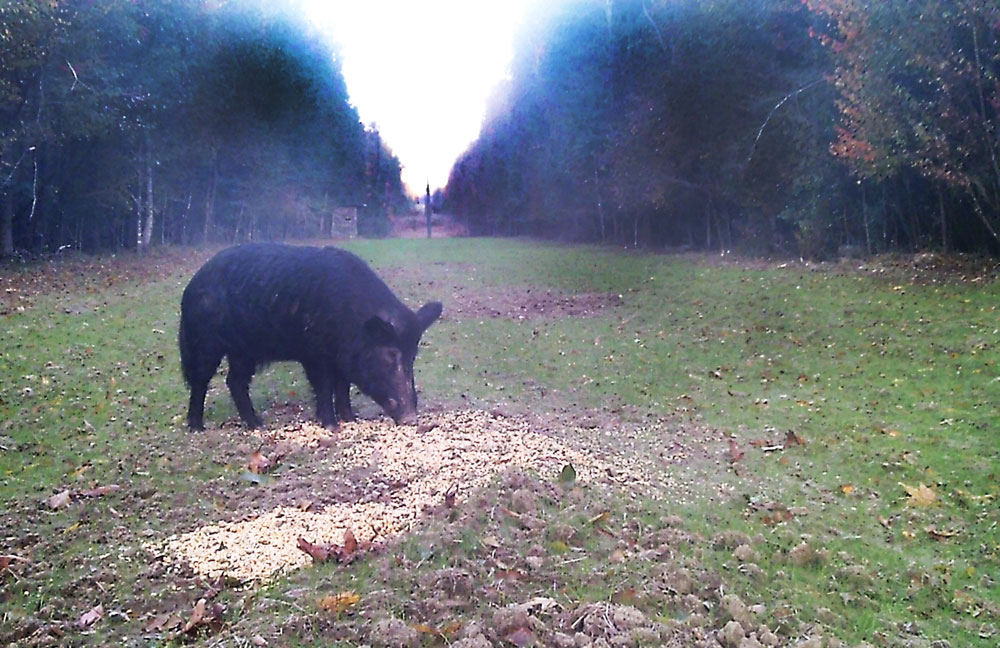
I’ve been asked why people want to come to Alabama to shoot feral hogs. Many hunters from the Northeast don’t have the chance to hunt feral hogs. In places in the West, especially in the Northwest, there are little or no hog-hunting opportunities for sportsmen. So, they want to come to Alabama to hunt wild hogs because hogs are different critters that they never may have hunted before. They can see very big wild pigs here in the South and be given the chance to harvest as many hogs as they wish, which helps to reduce our hog populations. Since we have no limits on hogs in Alabama, and we can hunt them during daylight and nighttime hours, a hunter can get as much hog hunting time and take as many hogs as he wishes to take.
The meat from these hogs is very good when prepared properly. Our family cooks and eats a number of hogs ourselves, and we donate hogs to families in our area too.
Many hunters take 5-plus hogs per trip at our farm. If the time of the hunt is during deer season when we only can hunt wild pigs during daylight hours, those numbers go down. But if hunters come in the summertime when we’re hunting at night with thermal monoculars and riflescopes, we’ve taken as many as 15 hogs in one night. Some of our hunts have been combo hunts for deer and wild hogs or turkeys and wild hogs. Those usually occur during the cooler months of the year for deer and in the spring for turkeys. At those times, the hogs generally will come out during daylight hours. If an individual wants to hunt hogs only, he should plan his trip to take place immediately after turkey season ends in the spring around early May or in the fall before deer season starts in mid-October.
How to Help Control Feral Hogs and Protect Your Lands
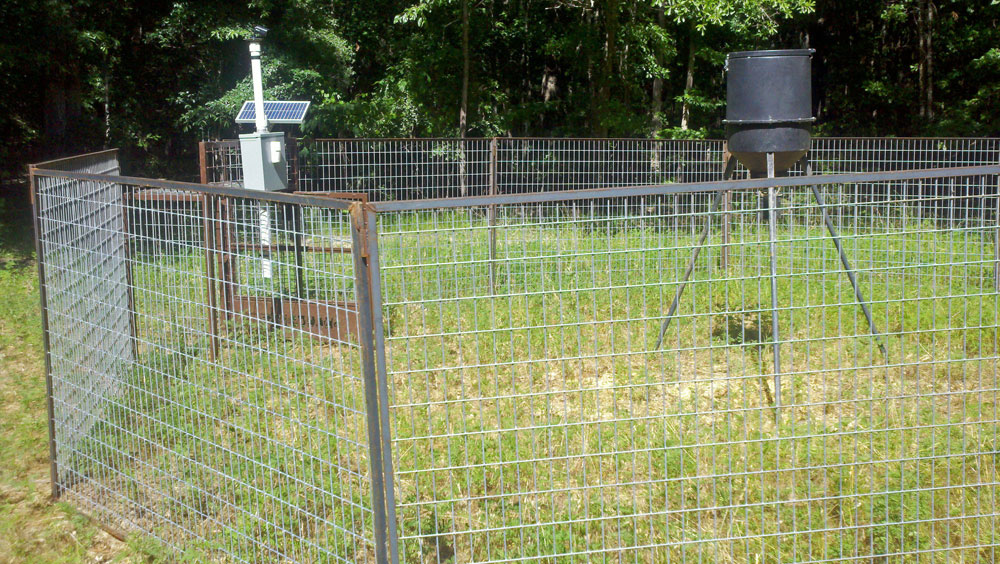
Because we haven’t been able to control our property’s wild hog population, this year we’ll be starting a new government program for trapping hogs. To date, the most effective method of controlling wild pigs has been using traps. The very best traps are portable, have cameras set up on them and have a door you can activate to fall and capture the hogs from your cell phone.
According to biologists, the best way to trap these hogs is to identify the sounders (groups of hogs) on your land. Once you see the entire sounder or most of it in the trap, you activate and drop the door the pigs used to go into the trap. Then you go to that part of the property and put all the hogs in the trap down. You can move the trap to another section of your land and catch another sounder. The government program we’ll be working with this year through the USDA, the Soil Conservation Service and others will pay 70-percent of the costs involved to buy one of these very efficient hog traps, which are fairly expensive. To learn more about state and government programs for help trapping wild hogs you can contact your local Department of Conservation.
Editor’s Note: Dr. Steve Ditchkoff mentions that part of the problem of getting rid of hogs is, “Feral hogs have high intelligence, keen noses with the ability to smell humans from 7 miles away but have poor eyesight. Trapping wild pigs is much more effective than hunting to get rid of the pigs. Fencing works best to keep hogs out of an area, but that’s an expensive proposition.”
To learn more, go to Amazon for Dr. Ditchkoff’s book, written in conjunction with several other biologists, “Invasive Wild Pigs in North America: Ecology, Impacts, and Management – 1st Edition.”














